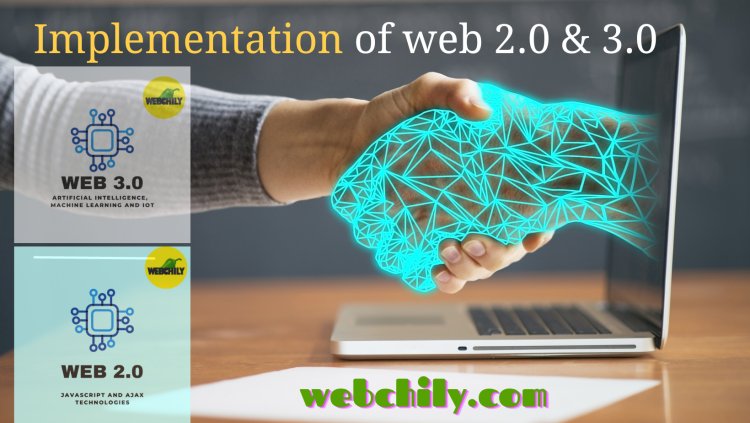What is the major Difference B/W Web 2.0 and Web 3.0
Learn the basic difference between different technologies and the evolution of the internet, know the basic difference between web 2.0 and web 3.0

Web 2.0 refers to a set of technologies, design patterns, and business models that emerged in the early 2000s as a response to the limitations of the original, static web. Unlike the original web, which was largely a collection of static pages and information resources, Web 2.0 emphasized user-generated content, social interaction, and collaboration. Some of the key features of Web 2.0 include:
-
Social media: Web 2.0 platforms encouraged social interaction and collaboration through social media tools like blogs, forums, and social networks.
-
User-generated content: Web 2.0 platforms allowed users to create and share their own content, such as blogs, videos, and photos.
-
Rich user interfaces: Web 2.0 platforms featured richer user interfaces, often powered by JavaScript and AJAX technologies, which made them more interactive and responsive.
-
APIs: Web 2.0 platforms exposed their data and functionality through APIs, making it easier for developers to build third-party applications and integrations.
-
Cloud computing: Web 2.0 platforms often used cloud computing technologies, which allowed them to scale and serve large user bases more efficiently.
Overall, Web 2.0 represented a significant shift in how people interacted with the web, and it paved the way for many of the online services and social media platforms that are popular today.
Web 3.0, also known as the semantic web, is a term that refers to the next evolution of the web beyond Web 2.0. While Web 2.0 was focused on user-generated content, social interaction, and collaboration, Web 3.0 is focused on making the web more intelligent and connected. Here are some key features of Web 3.0:
-
Artificial intelligence and machine learning: Web 3.0 will make extensive use of artificial intelligence and machine learning to analyze data and provide more personalized experiences for users.
-
The Internet of Things (IoT): Web 3.0 will incorporate IoT technologies, which will enable a wide range of physical objects to be connected to the web and share data.
-
Linked data: Web 3.0 will use linked data, which is a way of connecting different data sources on the web in a way that is machine-readable and easily understandable.
-
Decentralization: Web 3.0 will be more decentralized than the current web, with more emphasis on peer-to-peer networking and distributed architectures.
-
Smart contracts: Web 3.0 will make use of smart contracts, which are self-executing contracts with the terms of the agreement between buyer and seller being directly written into lines of code.
Overall, Web 3.0 aims to create a more intelligent and connected web, where data is more easily accessible and understandable, and where machines can interact with each other and with humans in more meaningful ways.
Those who do use the term Web 4.0 generally envision a future web that is even more intelligent, interactive, and decentralized than Web 3.0. Some possible features of Web 4.0 could include:
-
Enhanced virtual and augmented reality experiences: Web 4.0 could see greater integration of virtual and augmented reality technologies into web experiences, creating more immersive and interactive environments.
-
Advanced artificial intelligence and machine learning: Web 4.0 could leverage even more advanced artificial intelligence and machine learning technologies to provide more personalized and intelligent services.
-
Increased automation and robotics: Web 4.0 could see greater integration of automation and robotics technologies, allowing machines to perform more complex tasks and interact with humans in new ways.
-
Quantum computing: Web 4.0 could make use of quantum computing technologies, which could allow for faster and more complex processing of data and information.
However, it is important to note that the concept of Web 4.0 is still speculative, and there is no widely accepted roadmap or vision for what the future web will look like beyond Web 3.0.
What's Your Reaction?















